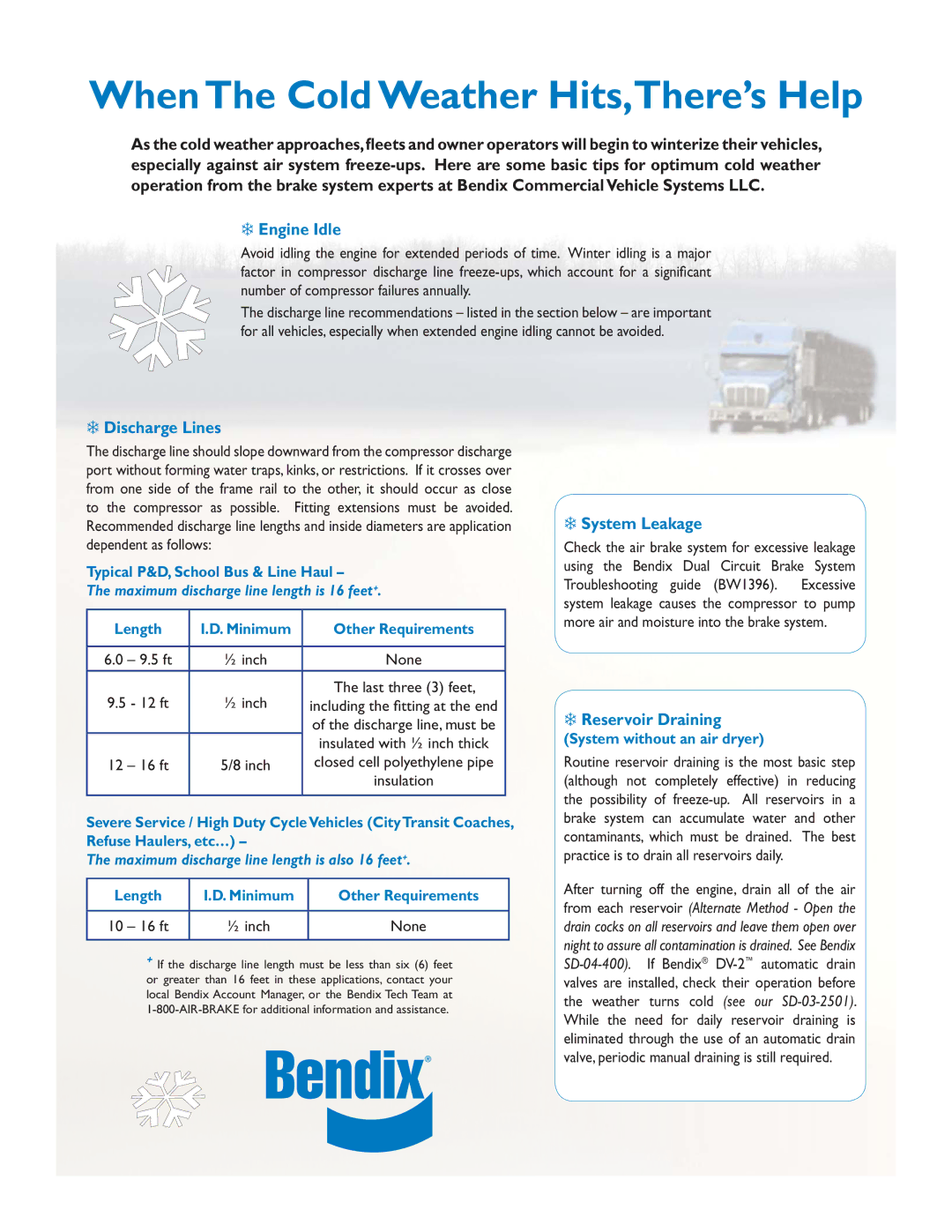
When The Cold Weather Hits,There’s Help
As the cold weather approaches,fleets and owner operators will begin to winterize their vehicles, especially against air system
GEngine Idle
Avoid idling the engine for extended periods of time. Winter idling is a major factor in compressor discharge line
The discharge line recommendations – listed in the section below – are important for all vehicles, especially when extended engine idling cannot be avoided.
GDischarge Lines
The discharge line should slope downward from the compressor discharge port without forming water traps, kinks, or restrictions. If it crosses over from one side of the frame rail to the other, it should occur as close to the compressor as possible. Fitting extensions must be avoided. Recommended discharge line lengths and inside diameters are application dependent as follows:
Typical P&D, School Bus & Line Haul –
The maximum discharge line length is 16 feet+.
Length | I.D. Minimum | Other Requirements |
|
|
|
6.0 – 9.5 ft | ½ inch | None |
9.5 - 12 ft | ½ inch | The last three (3) feet, |
including the fitting at the end | ||
|
| of the discharge line, must be |
|
| insulated with ½ inch thick |
12 – 16 ft | 5/8 inch | closed cell polyethylene pipe |
|
| insulation |
|
|
|
Severe Service / High Duty CycleVehicles (CityTransit Coaches, Refuse Haulers, etc…) –
The maximum discharge line length is also 16 feet+.
Length | I.D. Minimum | Other Requirements |
|
|
|
10 – 16 ft | ½ inch | None |
|
|
|
+If the discharge line length must be less than six (6) feet or greater than 16 feet in these applications, contact your local Bendix Account Manager, or the Bendix Tech Team at
GSystem Leakage
Check the air brake system for excessive leakage using the Bendix Dual Circuit Brake System Troubleshooting guide (BW1396). Excessive system leakage causes the compressor to pump more air and moisture into the brake system.
GReservoir Draining
(System without an air dryer)
Routine reservoir draining is the most basic step (although not completely effective) in reducing the possibility of
After turning off the engine, drain all of the air from each reservoir (Alternate Method - Open the drain cocks on all reservoirs and leave them open over night to assure all contamination is drained. See Bendix
